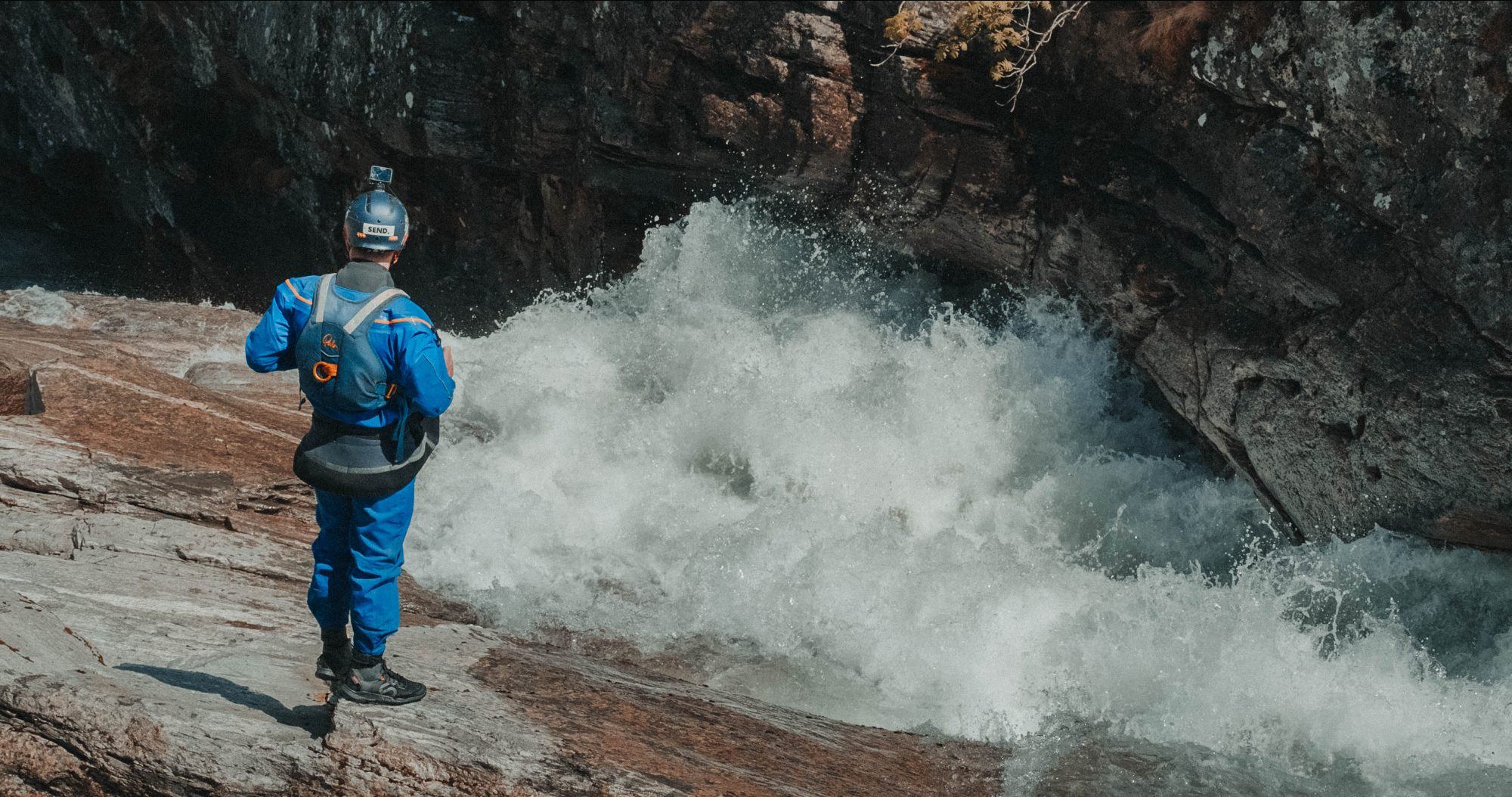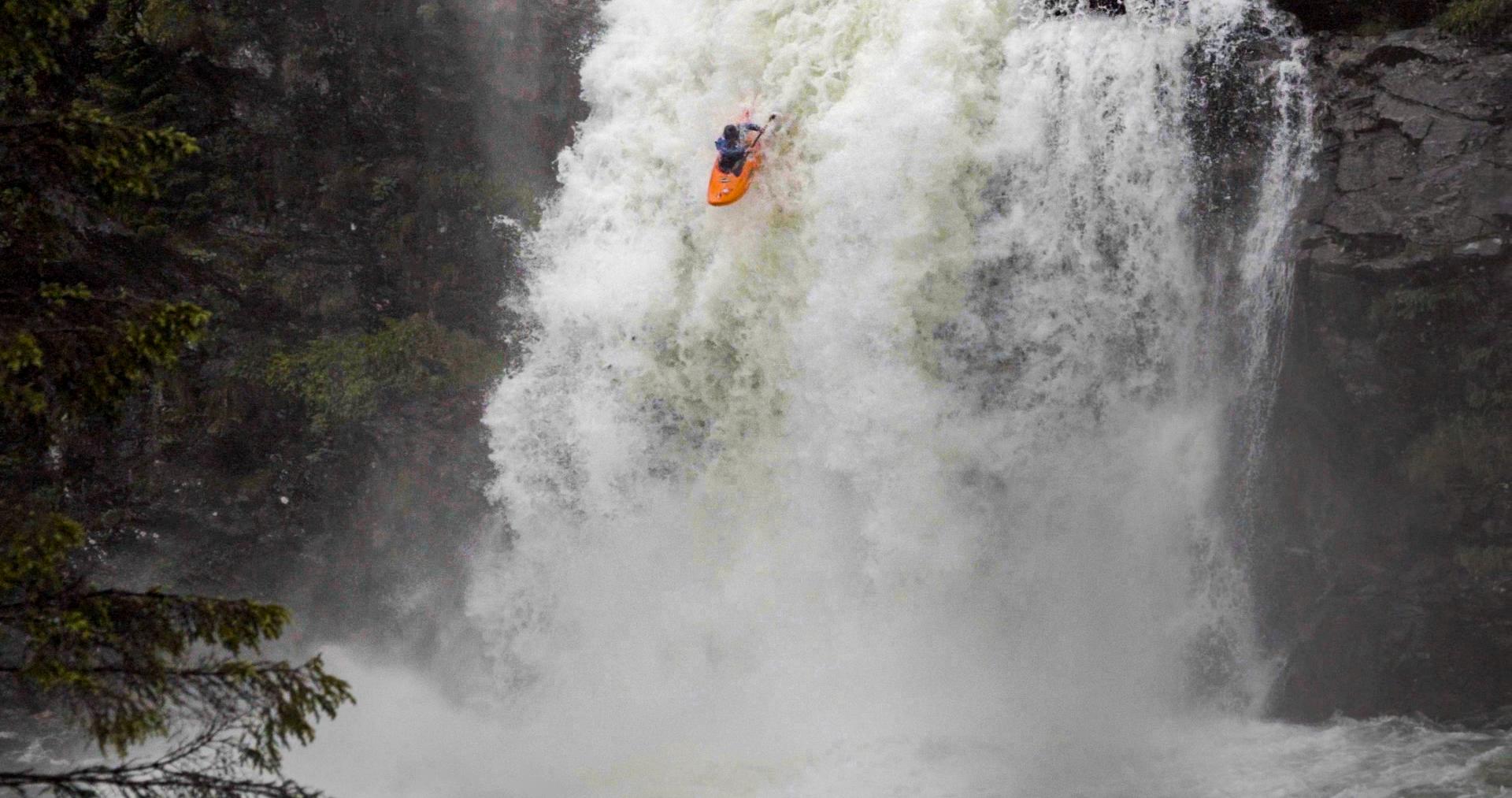One of the first times kayaking got me in trouble at school was when I was learning to helix. I was completely focused on my task, my workbooks left unopened, pen still in my trouser pocket, paying no mind to my teacher, the class or the outside world in general. I was sat at my desk with my head down, fixated on learning what I thought was the coolest thing in the world. I had watched Steve Fisher throw a helix in ‘Black Book’ over and over again. The image burned into my brain, I coaxed my hands through the movement, the kayak turning, flicking up from the water, the head dropping underneath it, the kayak spinning upside down and the arm reaching out to catch the water and pull the kayak back to upright onto the face of the wave before landing with a sharp – SLAP! I looked up to see my teacher glaring angrily and demanding that I give her the eraser I had been using as a vessel for my imagination. She carried my ‘kayak’ to her desk and let it sit there, she said something, but I don’t remember, I was already back to watching kayaking films in my head.

I thew my first helix very soon after that, it didn’t have much air on it but it worked first time. I had imagined myself doing it so many times that when I finally got the chance to try it in real life I could already do it.
This was not my first experience of the power of daydreaming (or visualising). My grandad had always taught me about how powerful the mind was. He wouldn’t let me train with weights when I was young but instead would have me just imagine that I was holding something heavy in my hands and to complete the movements as if it was really heavy. It worked my arms got tired and the muscles grew. He also conditioned me not to have a bad side. I was made to eat my dinners with my left hand and write with my left hand, to train my mind on how to control my left hand better.
I have always had an easy time imagining things but I have never studied it. So take this as you will but here’s how I do things in my head to allow me to do them in real life.

Picture the dream
Imagine that perfect line or trick from start to finish. Everything going perfectly, repeat it over and over again in your head. If it’s something someone has already done and you’re trying to repeat it, watch the video of them doing it and slowly begin to transform the image from them doing it into yourself doing it. Imagine their kayak changing shape, their equipment changing colour and all the other details changing until it’s no longer them hitting the line or trick, but you.
Break down the dream
All the small details that add up to the bigger picture have to be broken down and visualised on their own as well. Small details are key here.
Problem-solving
Imagine the problems that might arise and how to solve them. Then if they do happen, you already have the solution engrained into your brain on how to fix things.
Add in the senses
Now you have the base image in your head it’s time to add some more layers. Imagine the water temperature on your hands and face, the smell in the air, the sound of the water and try to integrate as many of your senses as you can. If it’s a movement you can do on dry land or flat water get out there and practice it, very slow at first and then slowly faster until it’s as close as it can be to the real movement.
Primers
I will often pick a song to listen to throughout the visualising process and then on the day that I want to go for it, I listen to the song on repeat again and I find my mind wanders easily back to all the visualising I have done in the past.

I recently threw the first Cobra flip off the infamous Double Drop in Norway and it was this process that allowed me to hit it. I had never thrown that trick on my righthand side before, but I’ve visualised it for years now and when it came time to do it, it worked perfectly.
Or half perfect I should say. My dream has to hit Cobra flips off both parts of the drop but I had to pull out of the second one because I knew I was too close to the rock shelf on river right and I would only get closer to it if I dropped my left edge. This rock shelf has hurt several people and broken a lot of kayaks this season and I promised myself whatever happened I would not throw myself upside down off the second drop if I was not in completely the perfect place. The inventor of the trick and kayaking legend Aniol Serrasolses was there that day and he really hurt his neck on a normal line off the second waterfall (after throwing a sick Cobra flip on the top one).

It was definitely low water for this trick but I had waited too long for the chance to throw it and I took the opportunity I had in front of me. If I find myself there with perfect flows then I will for sure try again. The double Cobra flip off Double Drop remains a dream but ‘the dream‘ is to kayak forever.
See you on the water, Bren